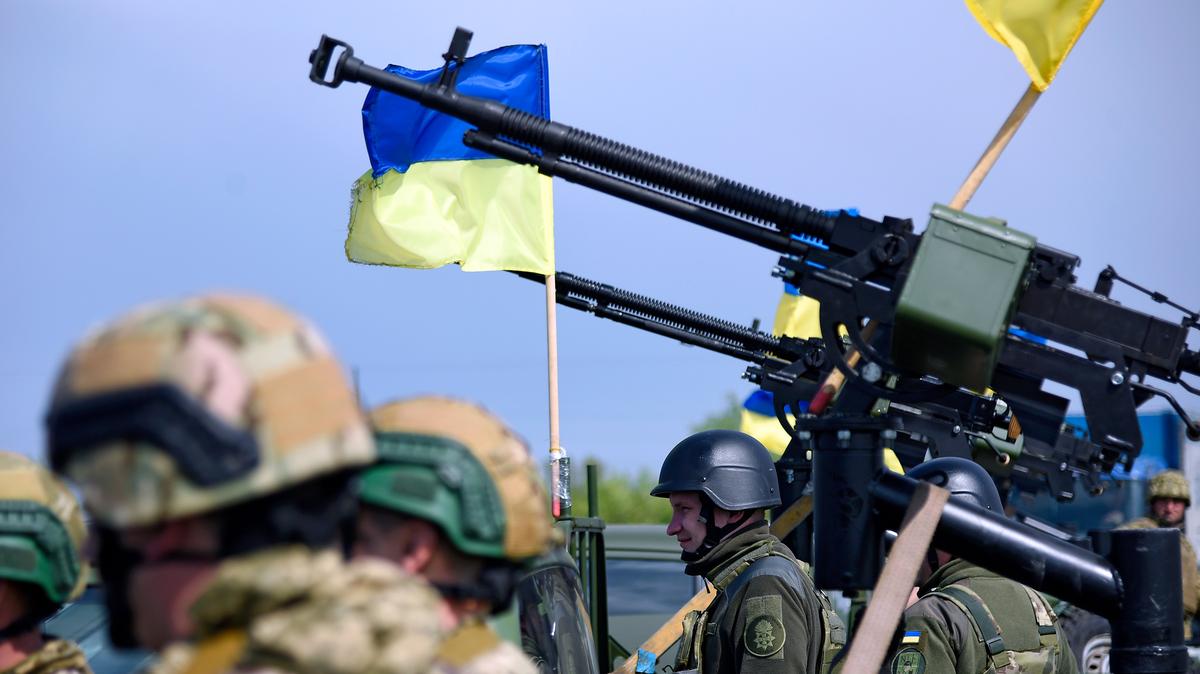Russia continues terrorising Ukraine with missile attacks, but they are becoming less effective. Western-produced surface-to-air missile systems (SAMS) have started arriving in Ukraine, resulting in a sharp increase in the number of Russian missiles and drones that are shot down. On 13 May, a Russian air force group that was allegedly intending to attack the Ukrainian city of Chernihiv was destroyed in the Bryansk region. At the same time, the allegedly unstoppable hypersonic Kinzhal missiles tried to destroy the Patriot system defending Kyiv, but were shot down. Novaya-Europe asked radar engineer Andrey Gorbachevsky to expound the growth of Ukraine’s air defence capabilities.
Russian air force tactics
The emergence of new air defence capabilities in Ukraine has driven Russia’s air force to act much more cautiously.
Until 2022, the Ukrainian air defence consisted of old Soviet Buk-M1 medium-range systems (45-50 km) and a small number of S-300 long-range systems (100-120 km). Though the Russian Ministry of Defence announced the annihilation of Ukrainian air defence only two days into the war, most of these systems remained operational. Of course, the Buk was hopelessly outdated by the start of the invasion and could have been suppressed by modern electronic warfare systems, but either there were no such systems or Russian pilots did not rely on them, because they did not dare to fly next to the Buks.
The large number of Stinger man-portable air defence systems (MANPADS) near the frontline (also known as the Line of Contact, LOC) has made it difficult for Russian aircraft to even cross this line. Stingers can fire at altitudes up to 4 km and at ranges up to 6 km, so one would have to cross the LOC at altitudes of at least 5 km, where an aircraft can already be detected by conventional SAM radars at maximum range. The radar detection range is usually twice the SAM’s maximum firing distance.
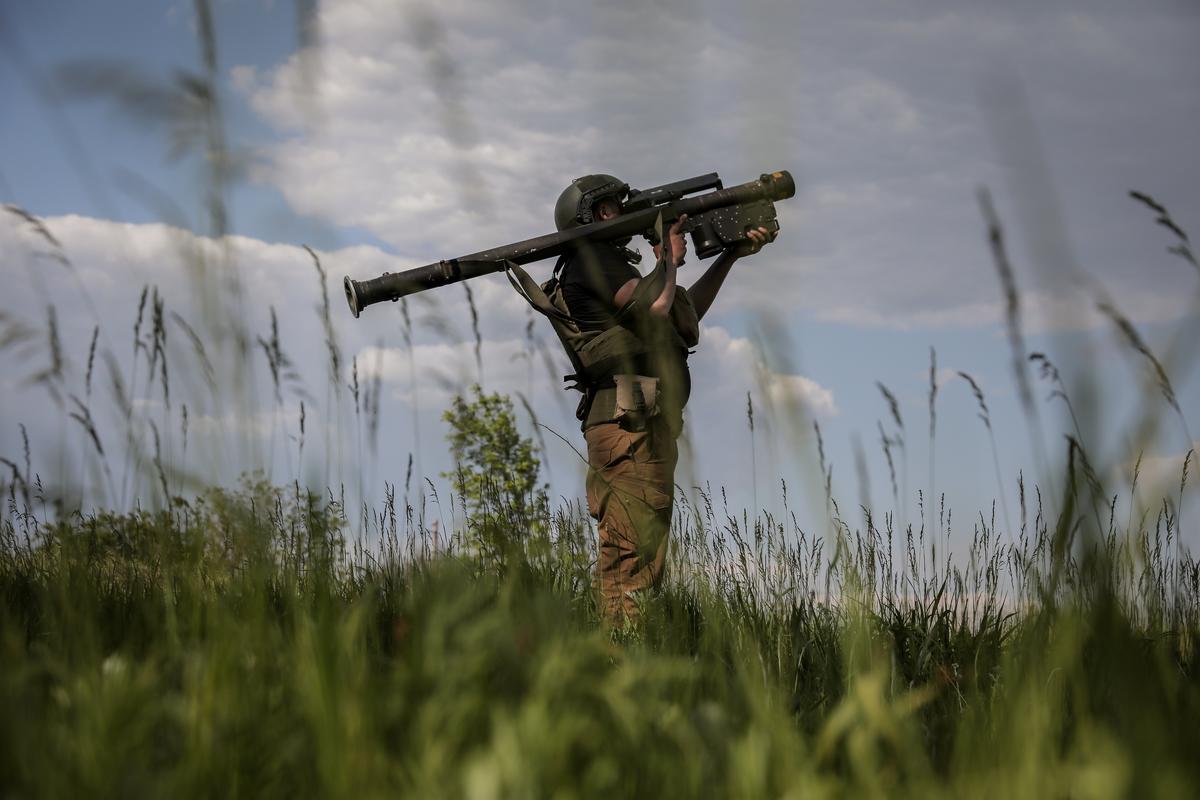
A Ukrainian soldier aiming a Stinger man-portable air defence system. Photo: EPA-EFE / OLEG PETRASYUK
As a result, the Russian air force first adopted the tactic of attacking at extremely low altitudes. A radar beam spreads rectilinearly, so it will not detect an aircraft flying below the horizon. Besides, any tall objects located near the radar — buildings, trees and so on — reduce the visibility range for low-altitude targets. This is where we see the leading role of the Stingers, which are so commonplace that one can only get past them if the MANPADS operator is caught off guard.
Therefore, the Russian command decided to stop attempts to break through the front line altogether and instead to fire cheap unguided missiles at the enemy’s front line at a range of up to 5 km, flying at low altitudes. Targets deep inside enemy territory were destroyed by high-precision missiles or by indiscriminate shelling from not very accurate howitzers. However, missile stocks began to run out, whereas howitzers cannot destroy massive reinforced concrete structures and only have a range of 30 km.
So the Russians had to change their tactics again. They decided to use high-precision glide bombs, which can fly 40-70 km when launched from heights of over 10 km. For this, they modified ordinary 500- and 1,500-kg bombs, adding wings and navigation systems similar to the US JDAM bomb (on 20 April, a Russian Su-34 dropped one of these glide bombs onto the Russian city of Belgorod in what was described as a “missile lift-off accident”). It was an attempt at this tactic that Russia demonstrated in Bryansk, when an entire group of Russian aircraft consisting of a Su-34, Su-35, and two helicopters, were shot down.
The Bryansk incident
Neither Russia nor Ukraine disclose details of the Bryansk operation, so we will have to reconstruct the event ourselves. Russian air force officers understood quite well the danger of flying at high altitudes. Therefore, they likely carried out a recon mission, which showed that a Ukrainian Buk system was operating in the area.
Since the Buk is a priority target for artillery, it is usually deployed no closer than 20-30 km from the front line, meaning its impact zone could not extend beyond the front for more than 30 km.
A Su-34 fighter-bomber was to launch the bombs, and a Su-35 fighter was to cover it. For the bomber to get closer than 30 km to the LOC, the Buk would have to be jammed. Two Mi-8 helicopters were assigned the task. These are very powerful jammers, but that is also their weak spot: an anti-aircraft missile can target their radiation. Therefore, jammers must not enter the potential hit zone, but they cannot be too far away from the targeted SAM, because the farther it is, the less efficient the jamming will be.
The Ukrainian army took advantage of this. They created an illusion that the area in question was defended by one or two Buk systems. For safety reasons, they were moved frequently and switched on alternately. However, the real danger was posed by a covertly delivered long-range SAM. Its particular type does not matter. The S-300 and the Patriot have similar characteristics (120-km range), and the Franco-Italian SAMP-T is only slightly inferior.
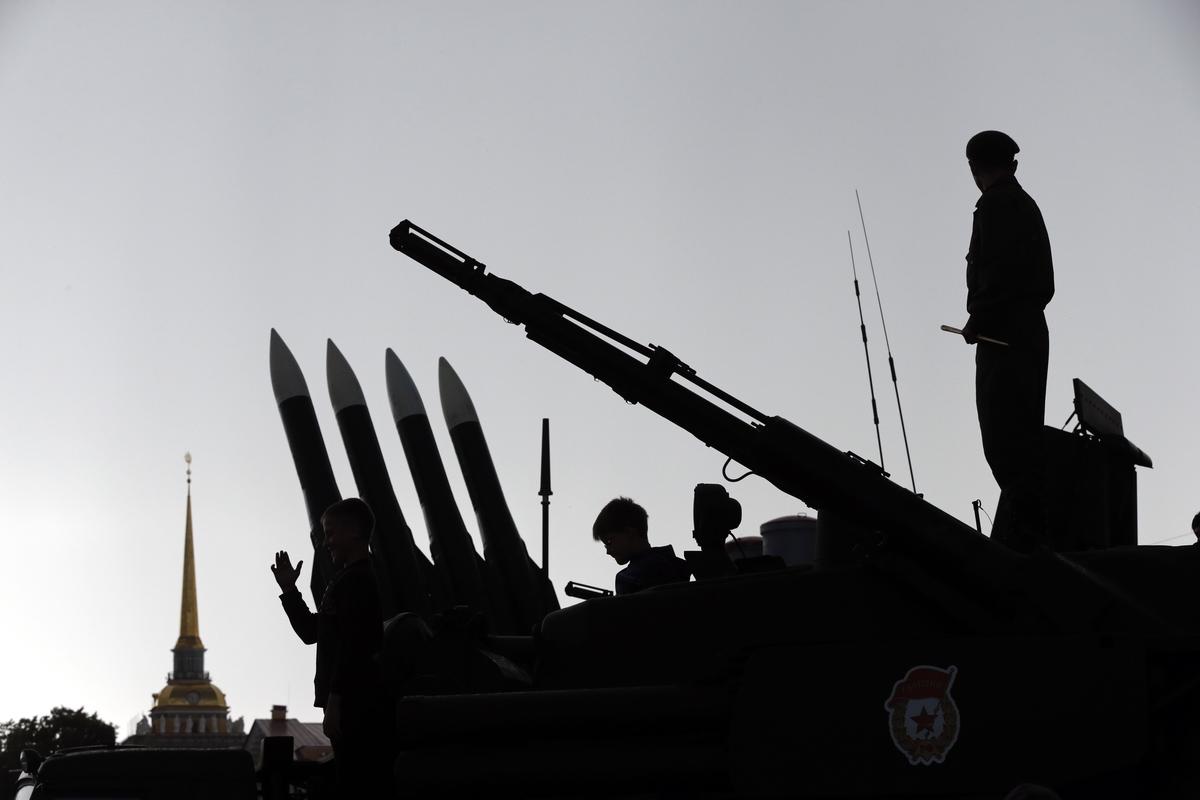
The Buk surface-to-air missile system. Photo: EPA / ANATOLY MALTSEV
Assumed Ukrainian strategy
Let us assume that the S-300 radar was located 30 km away from the LOC and the missile launchers were 20 km away. Both must have been carefully camouflaged. The helicopters would have arrived at what they thought was a safe distance of 40 km from the LOC in advance and turned on their jammers once the planes took off from the airfield. Since the Buk is very vulnerable towards jamming, it would not detect the planes, and one would have to wait for the planes to enter the kill zone of the ambushed S-300. Therefore the missiles against the helicopters are launched 3-5 minutes after the jammers have been turned on. They are launched in stealth mode, i.e. without turning on the radar. As the helicopters fly at low speeds, the missiles can lock on to their radiation, while the S-300 radar can monitor the jammer in passive mode and correct the missile’s path if necessary.
The distance to the jamming source is determined jointly by radar and missile triangulation. Once the missiles hit the helicopters, the jammer disappears and the Buk can detect the planes unless their own electronic warfare systems are on. However, the S-300 is much more resistant to jamming than the Buk, whereas the radar signature (RCS) of a Su-34 carrying a dozen bombs is very strong — 100 times that of the US F-35 stealth fighter. Therefore, the planes’ own electronic warfare systems might not have sufficed to suppress the radar.
Another way of detecting an aircraft is to assume that the fighter pilot turned on his own radar in fear of a stealth attack. A ground-based radio reconnaissance station could then determine the direction to the airborne radar and roughly estimate the distance.
So why were the aircraft unable to evade the SAM attack? The fighter could have defended itself in two ways — by shooting down the attacking missiles with its own air-to-air missiles or by jamming them. However, both methods require discipline and skills. One can shoot down a missile when it enters the airborne radar’s scanning sector, which does not exceed ±60°.
If the pilot detected the attack and immediately started to turn away, the attacking missile could have ended up outside of that sector.
Defence through jamming is even more challenging. If only one aircraft has its jammer on, the missile will use it as a beacon and be very precise. To disrupt the attack, two planes have to engage in blink jamming mode, when the jammers activate alternately on one side and then on the other. But even here, you can’t turn away during an attack: the jamming sector is also ±60°.
It is no longer possible to pinpoint the exact cause of why the aircraft were hit, but the Russian air force will have to drastically reduce its use of glide bombs. The risk of running into a long-range cloaked SAM is too great and will increase as the supply of new systems to Ukraine rises.
The Russian air force’s tech backwardness
The use of cluster protection helicopters shows that Russian electronic warfare capabilities lag significantly behind the global level. The US Army does not use this tactic at all. Its drawback is that the helicopters cannot fly in formation with the protected aircraft and must not approach areas where they can be hit by SAMs or fighter missiles. Also, the helicopters have a completely different angular direction than the protected aircraft. When the radar is engaging with the jets, the helicopter remains to the side of the radar’s main beam. Thus, the jamming power that the radar antenna receives is up to a 100 times weaker than it would be if the jammer helicopter were flying inside the protected group.
The US has also given up conventional jamming aircraft. Only the aircraft carrier-based Prowler jammers remain, and that is only because they operate at sea, where there won’t be any covert SAMs. The most promising means of electronic warfare today is the small and disposable ADM-60 decoy missile. These carry a jamming transmitter that emits a signal which mimics the signal reflected by the aircraft. Depending on the operator’s setup, it can simulate reflections from any US aircraft. Since several such signals can be emitted, several decoys will appear on the SAM radar screen. It is very difficult for the radar operator to tell which of the targets is real and which is false. The decoy flies ahead of the group, and the SAM operator is forced to shoot it down.
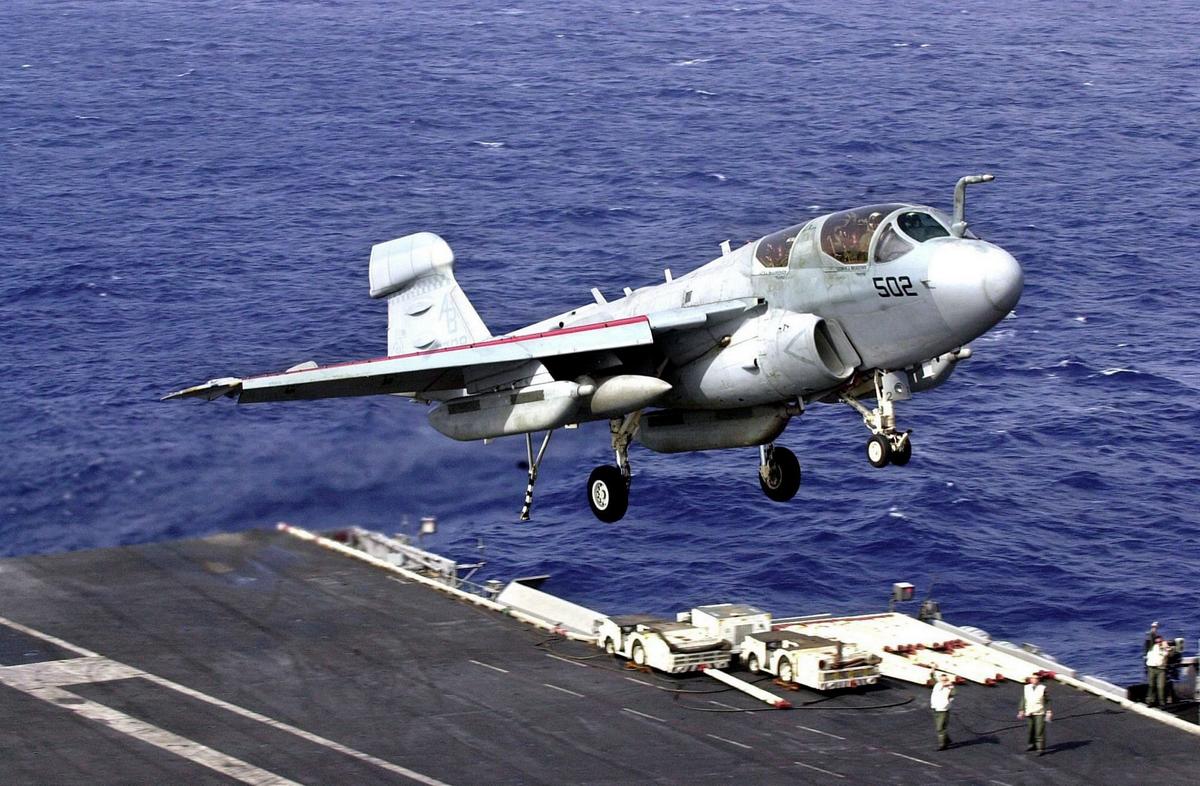
US Navy EA-6 Prowler, an electronic-warfare and reconnaissance aircraft . Photo: EPA / Elvira Urquijo
The advantage of such decoys is that the US has managed to make them cheap — much cheaper than a SAM missile. Moreover, hitting the decoy would take precious time, giving the aircraft an opportunity to fire an anti-radar missile at the SAM. Producing such a decoy in Russia is impossible. Developing a unique small and cheap turbojet engine would take many years. A small-sized jamming transmitter requires cheap chips made with the latest technology. Judging by the fact that Russia is now focusing on producing Shahed drones under an Iranian licence, the Russian army won’t have such traps at least for the next decade.
A second disadvantage of the Russian air force is the large backlog with the implementation of stealth technology. As I already mentioned before, Su-34s are up to 100 times more visible than F-35s. For 20 years, Russia has been working on the Su-57, its only fifth-generation fighter with signature control, but it has not made it to mass production. And anyway, the numerous deflector antennas make it unlikely to be properly stealthy.
The power of the fighter jet’s jamming transmitter should be proportional to its visibility, but placing such heavy and expensive systems on the Russian planes is not possible.
Moreover, a powerful jammer also suppresses the fighter’s own electronics, meaning Russian fighters with inadequate EW capabilities cannot get close to SAMs.
The US has developed new small interceptor missiles, meant to destroy attacking targets at close range, within a few kilometres. The advantage is that a fighter can carry many such missiles at a time. No such novelties have been announced in Russia.
In theory, Russia could hit Patriots with Kh-31p anti-radiation missiles, but the US has developed special decoys which imitate the radar’s radiation and draw the missile towards themselves. The S-300 lacks such defensive solutions.
Challenging the Patriot
As for the Kinzhal missile strike on the Patriot system near Kyiv, the two sides present different versions of events. Ukraine claims that the Patriot struck six Kinzhal missiles and sustained minor damage. Russia claims that it had fired fewer Kinzhals and incapacitated the Patriot. Western experts estimate that Russia has very few Kinzhal missiles — no more than 50. Thus it would be irrational to launch six of them simultaneously just to see how the Patriot would fare against them.
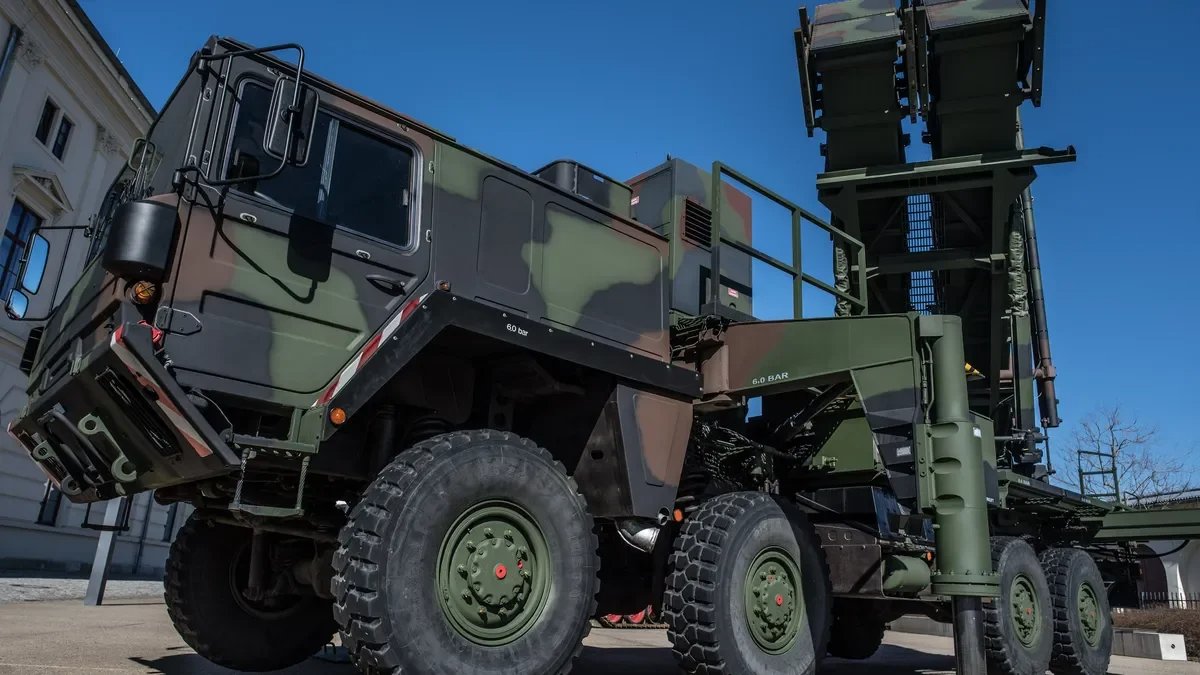
MIM-104 Patriot. Photo: EPA / FILIP SINGER.
Hitting a Patriot with so-called hypersonic Kinzhal missiles is not that easy. They only fly at a hypersonic speed of 10M at altitudes over 40 km. Once the missile drops to an altitude of 20 km, it becomes supersonic — no more than 4M, which is a regular target for the Patriot. Moreover, the Patriot can launch up to six missiles simultaneously. If one of them misses, another missile can be launched. The minimum launch time is three seconds. Keep in mind that it is quite easy for any SAM to shoot down a missile heading straight for it; it is much harder to hit lateral targets.
The Kinzhal is a stealth missile, but the Patriot radar can detect it at a distance of 70-90 km. If it detects a mass Kinzhal attack, the radar will simply shut down and have the system move away.
Since the Kinzhal heads towards its target at quite a steep angle, it is possible that the wreckage of the downed missile fell onto the Patriot. Incapacitating its radar will cause the Patriot to fail completely, but it is not too difficult to repair a radar hit by shrapnel: any element can be delivered by aircraft.
Conclusions
As Kyiv receives more and more modern SAMs, the ability of the Russian air force to operate over Ukrainian soil will be reduced to zero. It will have no choice but to do what it does now: either fire unguided missiles at the front line of defence or use expensive missiles against distant targets that are less well-defended.
Join us in rebuilding Novaya Gazeta Europe
The Russian government has banned independent media. We were forced to leave our country in order to keep doing our job, telling our readers about what is going on Russia, Ukraine and Europe.
We will continue fighting against warfare and dictatorship. We believe that freedom of speech is the most efficient antidote against tyranny. Support us financially to help us fight for peace and freedom.
By clicking the Support button, you agree to the processing of your personal data.
To cancel a regular donation, please write to [email protected]
